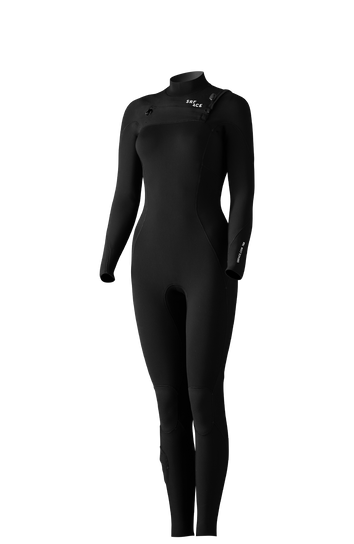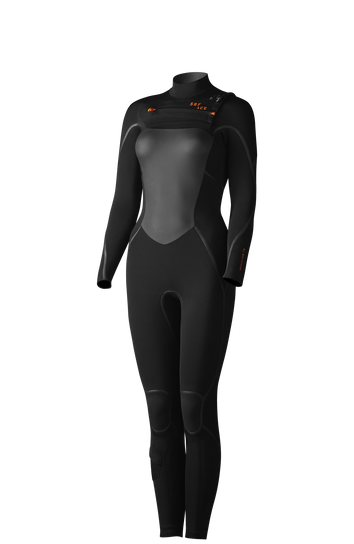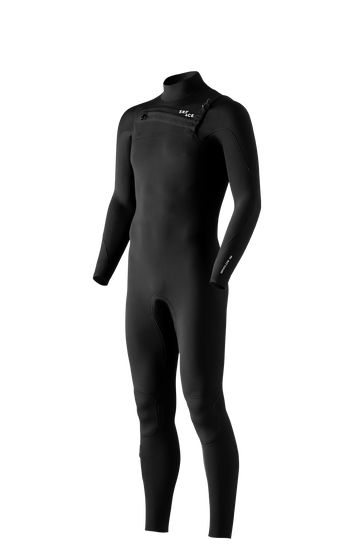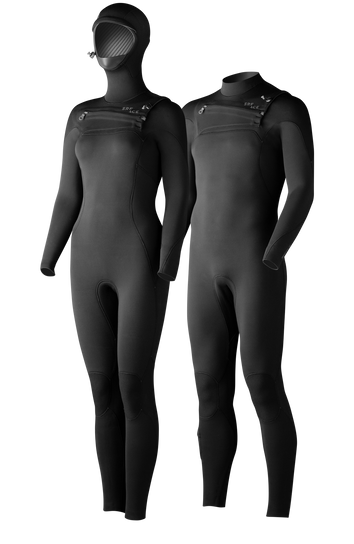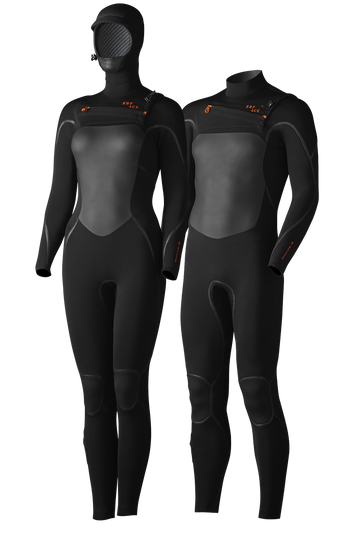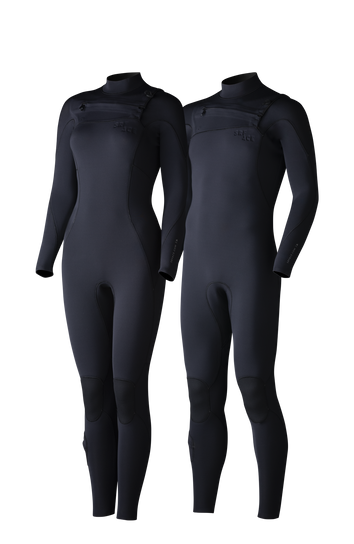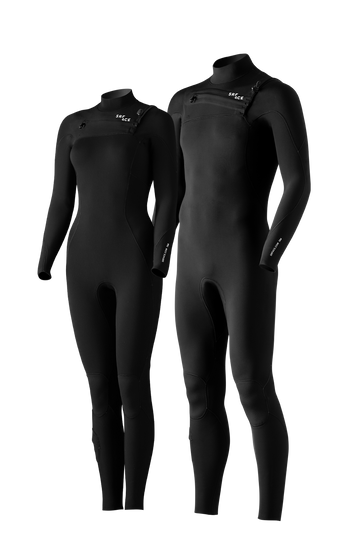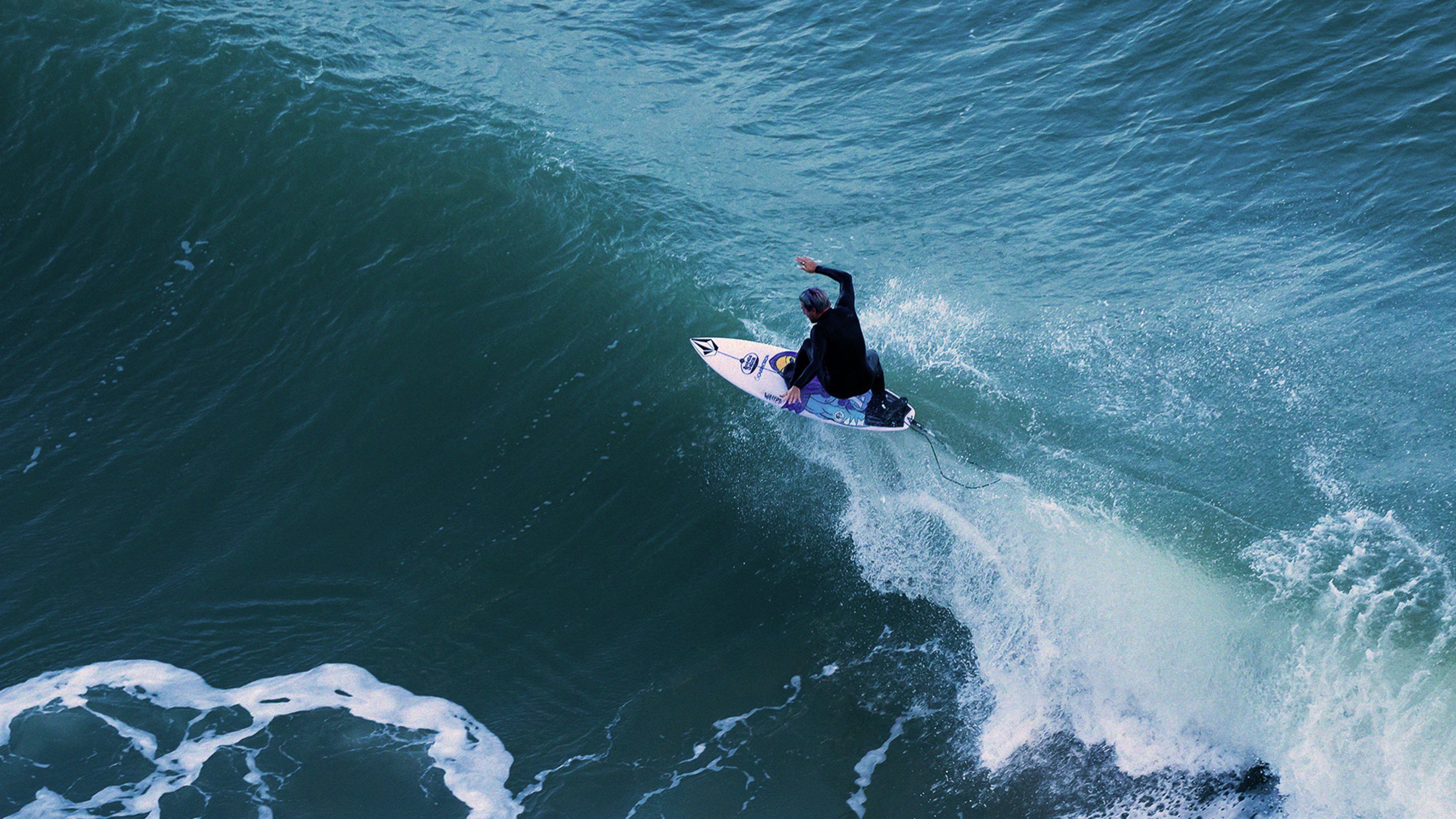
WHAT IS LIMESTONE NEOPRENE?
It might sound strange, but it’s common practice these days to make high-end wetsuits out of limestone rock. What is limestone neoprene, and how is this done? The world is full of surprises: We can turn a rock into a wetsuit. But it’s not a simple process.
OLDSCHOOL NEOPRENE
Let’s rewind to the 1930s, when DuPont invents synthetic foamed rubber and calls it neoprene. At that time, wetsuits didn’t exist yet. Different parties developed the first wetsuits for army divers, so they could stay in cold water longer. Neoprene is an elastomer with the chemical name polychloroprene. A chemical process binds strings of a clear liquid called chloroprene together. The original chloroprene wetsuits were made with petroleum-based chemicals, which are harmful to the environment. Consequently, different companies reinvented neoprene over the years to become more sustainable.
 LIMESTONE NEOPRENE WETSUITS
LIMESTONE NEOPRENE WETSUITS
What is limestone neoprene and how is it different from petroleum-based CR chloroprene? In the 1960s, a new way of making neoprene evolves. The main neoprene compound remains chloroprene. However, instead of using dirty petroleum-based ingredients, it’s now made with calcium carbonate from limestone. This ingredient forms chloroprene rubber chips. These are melted down in an oven and go through a chemical process. The melted substance is infused with air bubbles and baked into a block of neoprene foam. The manufacturer then slices this block into neoprene sheets. At this stage, we determine the neoprene thickness. It can vary between 0.5mm, all the way up to 7mm when used for surfing wetsuits.
Choose your wetsuit
 LIMESTONE NEOPRENE CHARACTERISTICS
LIMESTONE NEOPRENE CHARACTERISTICS
We determine the quality of neoprene by a couple of factors. Firstly, the elongation percentage. This measures the amount of flexibility in the neoprene. The higher the number, the more stretchy the neoprene is. Therefore, the better it is. Secondly, we measure the softness and weight by calculating the density. The heavier the foam, the harder, thus affecting the stretch. We consider softer and lighter foam to be more high-end. Thirdly the ozone and UV resistance. High resistance to ozone and UV rays results in more durable neoprene. This also means it is less easy to crack or get brittle. All these characteristics of limestone neoprene are more advanced than its predecessor petroleum-based neoprene. This makes limestone neoprene, when used in the right grade, one of the most flexible and warm neoprene types available.
ECO-FRIENDLY NEOPRENE
There are different types of eco friendly neoprene available. The invention of limestone neoprene made a big impact on wetsuit manufacturing, which transformed the high-end wetsuit industry to become more sustainable and environmentally friendly. Some companies have different names for their limestone based alternative. You might have heard of Japanese Yamamoto neoprene, which is used in some high-end wetsuits models. Other versions of limestone neoprene are Bioprene and Geoprene wetsuits. Not long ago, we worked exclusively with limestone neoprene. The elongation, flexibility and insulation characteristics of limestone neoprene are better than its predecessor (petroleum based neoprene). This makes limestone neoprene one of the most flexible and warm neoprene types out there.
Recently however, a new even more sustainable material has made its appearance on the wetsuit stage. A few years ago, Yulex developed an innovative neoprene-free natural rubber called Yulex® in collaboration with Patagonia. This revolutionary plant based rubber foam has the lowest carbon footprint in modern wetsuit production. It’s double-lined which allows for strong and durable seams between panels, which keeps water out and keeps you warm. While it is more costly than limestone neoprene, the quality of this new foam has rapidly improved over the last few years and is continuing to do so. It already performs equally good, if not better in most material properties compared to the limestone neoprene we are now used to. SRFACE now collaborates with Yulex to develop their materials further, so we can use them in our Eco wetsuits product range and beyond
 DOUBLE LINED NEOPRENE
DOUBLE LINED NEOPRENE
After slicing limestone neoprene foam into sheets of the right thickness, we laminate it with a stretchy fabric layer. To make it more durable, lining can be applied on both sides of the wetsuit. On top of that, it protects it against outside influences like UV and ozone. The outside lining also offers protection from fingernails cutting through the neoprene. We line the inside of our wetsuits with flexible and soft material. Therefore, your wetsuit feels comfortable to wear on the skin. The main body panels of most high-end wetsuits, including ours, are lined with a quickdry plush lining. Resulting in an insulating layer between the body and the cold water. This quickdry plush fabric helps the material to dry faster too, so you can be ready for your next session in no-time. Double lined neoprene is neoprene which has fabric lining laminated onto both sides of the neoprene foam.
 SINGLE LINED NEOPRENE
SINGLE LINED NEOPRENE
With a metal embossing tool we melt a raw neoprene foam sheet’s surface. This creates a ‘skin-like’ coating to the foam. Single lined neoprene is also known as mesh, smoothskin or glideskin. Single lined neoprene panels are mainly used on the outside of chest and back panels. Specifically on cold water surfing wetsuits. High-end winter wetsuits often use a single-lined neoprene chest and back panel such as smoothskin. The smooth outside doesn’t absorb water and helps the water run down the surface immediately. Thereby protecting your body from windchill, so you can stay in the water longer. Wetsuits that are completely made out of single lined neoprene do exist but are not commonly used for surfing. However, you might find full single lined wetsuits to be used for open water swimming or triathlon.
Featured wetsuits
SRFACE WETSUITS
Over the past few years, limestone neoprene became the standard for most high-end wetsuits. However, this doesn’t mean oldschool petroleum neoprene is a thing of the past. Some brands still use it in mid and entry-level wetsuits. If you can, stay away from petroleum-based neoprene and only use limestone neoprene wetsuits from brands like SRFACE. We make our wetsuits with the highest grade materials and technologies available. This includes the most flexible limestone neoprene foam. The double lined wetsuit panels feature the most flexible (360° limitless stretch) outside lining available. SRFACE uses single lined smoothskin neoprene chest and back panels to avoid windchill. We line the body panels with a comfortable and heat-retaining quick-dry plush insulating inside lining. Finally, we finish our glued and blind stitch seams with heat-welded neoprene tape on the inside and liquid rubber-seals on the outside.
Read more about SRFACE wetsuit materials.

Ready to surf?
Shop from €159



